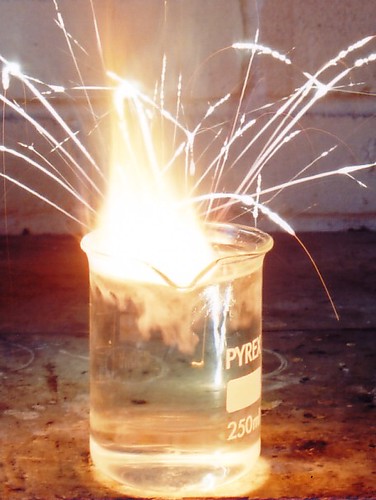Question #836a3
3 Answers
The specific heat capacity of the metal is 3.5 J°C⁻¹g⁻¹.
There are two heats involved:
Heat absorbed by metal + heat lost by water = 0
The density of water is 1.00 g/mL. So
Note: The answer can have only 2 significant figures, because
It looks as if your metal is lithium.
Don't do this experiment, because lithium reacts violently with water.

Explanation:
So, you've got an unknown metal that weighs 5.10 g and has a temperature of 48.6 degrees Celsius.. You place it in a calorimeter that contains 20.0 mL of water initially at 22.1 degrees Celsius.
Notice that the temperature of the water increases and the temperature of the metal decreases.
You know that the heat lost by the metal was gained by the water. Mathematically, this is written as
This equation becomes
Notice that you were given a volume of water, not a mass, which implies you must use water's density at
So, plug all your data into the main equation and solve for
You use the equation
Where the
(and the suffixes are for metal and water respectively)
In general
Let's set up the equation and then fill in what we know:
You now have an equation with only one unknown, and this you can work out, can't you?
Note:
The



